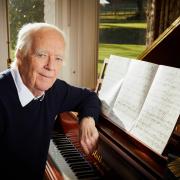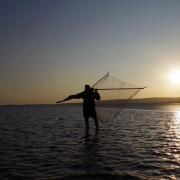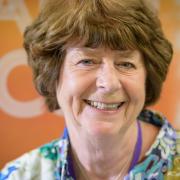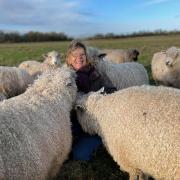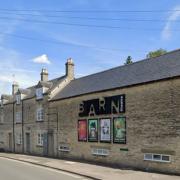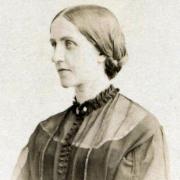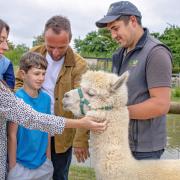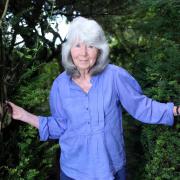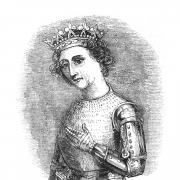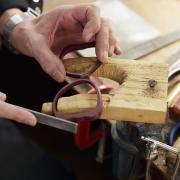Oxford don, close friend of Tolkien, and creator of the magical land of Narnia, Clive Staples Lewis’s love of fantasy began at a very early age
Words: Stephen Roberts
Described as a ‘medievalist and Christian apologist’, C.S. Lewis and a previous ‘Cotswold Great’, J.B. Priestley, were both inspired by the philosopher J.W. Dunne (1875-1949) who wrote An Experiment with Time which duly influenced the Time Plays of Priestley, and inspired Lewis to write fiction in the same vein. Another author to be touched by Dunne was J.R.R. Tolkien, who I’ve also featured previously. Dunne may be little known but he’s left a legacy among those far more famous, including Lewis.

Born in Belfast, to Albert Lewis, a solicitor, and Florence ‘Flora’ Lewis, a graduate of the then Royal University of Ireland, Clive Staples Lewis was something of a prodigy who could read aged three and whose love of fantasy came early. In league with his elder brother, he created a surreal fantasy world called ‘Boxen’ in which animals could talk, including the magisterial sounding ‘King Bunny’. He was influenced here by one Beatrix Potter. It’s an oddity that Lewis would end up chewing the cud in a ‘Rabbit Room’ later in life (read on). Sorry, I feel like I mixed up some metaphors there or committed some other similar literary indiscretion which I’m sure Lewis would have called me out for. Oh, and his brother’s name was Warren (aka ‘Warnie’) incidentally. You couldn’t make it up. I’m tempted to say that he was an assiduous researcher forever burrowing for information. He certainly knew his own mind, declaring when he was young that his name was ‘Jack’, so he became Jack to family and friends.

There was sadness too, though; his mother dying three months shy of his tenth birthday. Some of Lewis’ schooling played out in the Malverns, at Cherbourg House, where he pitched up in September 1911, as he was approaching his 13th birthday, and then at Malvern College. He would earn himself a Classics scholarship at University College, Oxford, in December 1916. Come the following June though Lewis had patriotically enlisted in the British Army. During WW1 Lewis served as a 2nd Lieutenant and was wounded on the Western Front at the Battle of Arras in April 1918, a victim of ‘friendly fire’ as a British shell fell short of its target. Two of his colleagues were killed.

Lewis’ first book, Dymer, was published in 1926 under the pseudonym ‘Clive Hamilton’. It’s a poem in ‘rhyme royal’, idealistic and satirical, which established a style that would surface in most of his work. Oxford featured prominently in Lewis’ story. He was a fellow of Magdalen College from 1925 and a regular at the ‘Eagle and Child’ on St Giles’ Street, which is a must visit for any budding writer or student of the genre. Head for the back room (the ‘Rabbit Room’) where Lewis, Tolkien – whom he first met in 1926 – and others, met up in a group dubbed the ‘Inklings’, discussing their assorted writing on Tuesday lunchtimes, no doubt in a fug of fag smoke (Lewis was a heavy smoker). This must have been a convivial gathering as it persisted from the 1930s to the ’60s. The Inklings didn’t restrict their literary imbibing to the Eagle and Child although that was their favourite: They also rocked up at the ‘Lamb and Flag’ across the way.

The Inklings idea and name was not the work of Lewis or Tolkien, but an undergrad named Edward Tangye Lean (1911-74), who wanted to bring writers together, but after he’d graduated the fantasy writers took it on for their own informal purposes. One of their favourite japes was for members to try and read the prose and poetry of Amanda McKittrick Ros (1860-1939), whose works were held to be overly ‘circumlocutory’ (not a compliment) which caused them to be ridiculed as ‘some of the worst prose and poetry ever written’. The challenge was to try and read this stuff for as long as possible without bursting into uncontrollable laughter. The minefields that lie in wait for us writers.
When I wrote about Tolkien, I revealed that he eccentrically turned up at a New Year’s Eve party dressed as a polar bear (as you do). Well, Lewis was similarly attired for the same do. You may be thinking ‘Unlucky they chose the same costume’ or ‘Maybe they planned it that way’, but the point is that this wasn’t even a fancy-dress party. For all the expected stuffiness of academia, for all the seriousness of being a university don and being a respected literary critic, Lewis was an out and out eccentric who thought nothing of interrupting a tutorial for a noisy call of nature in the next-door room whilst bellowing his pearls of wisdom through the wall. Lewis and Tolkien were close friends, so it’s no surprise really that they kitted themselves out with matching Arctic costumes.

Lewis moved into ‘The Kilns’ in the Headington part of Oxford in October 1930 with his brother and Janie Moore (1873-1951) and her daughter. The exact nature of Lewis’ relationship with Janie has been debated. She was some 27 years his senior but a romance hasn’t been ruled out, although she may also have been nothing more than a surrogate mother. Lewis shared a room with Janie’s son during WW1 Army training when the two of them appear to have cooked up a pact whereby either of them would step in and support the other’s family in the sad event that one of them should lose their life. Edward ‘Paddy’ Moore would be killed in action in April 1918. Lewis duly moved in with the Moores, mother and daughter, the following year.

Allegory of Love was awarded the Hawthornden Prize of 1936, but his most widely-known work would be The Screwtape Letters (1942). He also wrote sci-fi books, including Out of the Silent Planet (1938) and Perelandra (1943). During WW2 Lewis hoped to serve in the armed forces again. He was 40 when war broke out and had hoped to take on cadet training, but his application was turned down so he’d become one of the war’s most famous Home Guardsmen while The Kilns received child evacuees from London and other cities. Lewis would be famous enough by now to appear on the cover of Time magazine in 1947 and was elected a Fellow of the Royal Society of Literature the following year.

Noteworthy as some of Lewis’s other work is, he’s surely best known for The Chronicles of Narnia, the seven fantasy novels published between 1950 and 1956 beginning with The Lion, the Witch and the Wardrobe and ending with The Last Battle, which was awarded the Carnegie Prize in 1957. Considered a classic of children’s literature, Lewis’ magnum opus has sold over 100 million copies in approaching 50 languages, and has been adapted for TV, film, stage and radio. The wardrobe, by the way, the ‘armoire’ or closet, is the gateway to the magical kingdom of Narnia, where mythical creatures and talking animals hang out: Lewis’ childhood reappears. In total he churned out over 30 books. Lewis switched dark blue for light blue in 1954 when he became Professor of Medieval and Renaissance English at Cambridge.

Lewis married the American writer/poet Joy Davidman in 1956 at Oxford Register Office, a relationship that would be cut cruelly short by Joy’s cancer. She died just four years later aged only 45 in 1960. That all too short romance was explored in the film Shadowlands (1993) in which Anthony Hopkins played Lewis, and Debra Winger his wife. The film features some Oxford landmarks, including Magdalen College, plus Golden Valley, which runs south-east of Hay-on-Wye and was a particular favourite of the academic. Joy’s premature death would certainly challenge Lewis’s Christian beliefs.

C.S. Lewis died at The Kilns on November 22, 1963, aged 64, from kidney failure. It was exactly one week before his landmark 65th birthday and was the same day on which President John F. Kennedy was assassinated and the writer Aldous Huxley died. Fifty years later (2013) Lewis was honoured with a memorial in Westminster Abbey’s famous Poets’ Corner.

Chronology
1898 – Clive Staples Lewis born in Belfast (November 29).
1919 – Publishes Spirits in Bondage under the pseudonym ‘Clive Hamilton’.
1925 – Takes up academic position at Oxford’s Magdalen College.
1930 – Lewis moves into ‘The Kilns’, Headington, Oxford.
1950 – Publishes the first book in The Chronicles of Narnia series.
1951 – Death of Mrs Janie Moore (January 12), who’d moved in with Lewis back in 1919.
1954 – Leaves the dark blue for the light blue and Cambridge’s Magdalene College.
1956 – Married the American writer Joy Davidman (April 23).
1960 – Death of Joy Lewis (Davidman) of cancer aged 45 (July 13).
1963 – Death of C.S. Lewis in Oxford (November 22) aged 64.

References
- Chambers Biographical Dictionary (1974)
- Britain by the Book: A Curious Tour of our Literary Landscape (O. Tearle, 2017)
- Movie Locations (movie-locations.com)
- The Official Website of C.S. Lewis (cslewis.com)
- Britannica (britannica.com)
- Biography (biography.com)
- C.S. Lewis Foundation (cslewis.org)





